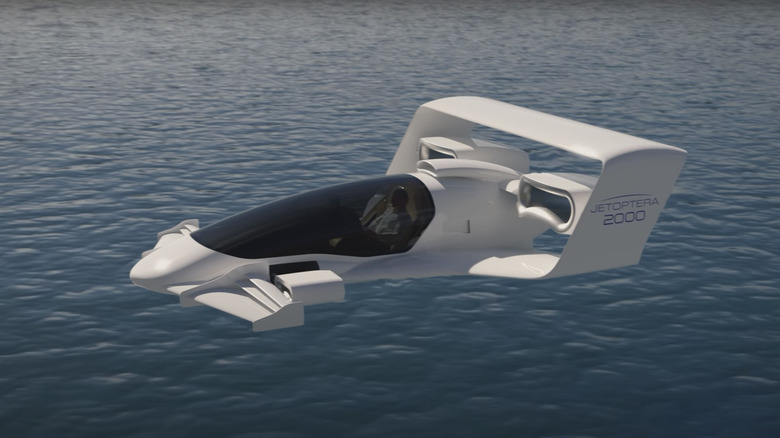Jetoptera VTOL Takes Aircraft To A Whole New Level
It's long been promised, but the days of retro-futuristic Jetsons-style flying cars may soon be upon us. That's according to Edmonds, Washington-based Jetoptera, the aviation startup responsible for the J-2000, a flying car currently under development that's unlike anything else in this space. There are no sci-fi-inspired giant, drone-like fan blades or ducted fans to be found here.
The J-2000 has high-flying ambitions, to say the least. According to Jetoptera, this vehicle not only will have vertical takeoff and landing (VTOL) capabilities but will also be able to fly at speeds of 200 mph. The company envisions it as ideal for use as an air taxi, but should someone want to take it further than across town, it will have a total range of 200 miles. Add to this that the aircraft will have the ability to hover while also being quieter than turbojets, turbofans, or propeller blades, and it all sounds almost too good to be true.
Almost. But there's some real credibility behind this company and its aircraft designs. By September 2021, the U.S. Air Force had received 218 submissions after soliciting entries for a high-speed vertical takeoff and landing (HSVTOL) competition, and the J-2000 was one of just 35 that advanced to the next round (via Yahoo). Then in February 2022, Jetoptera was among 11 companies that advanced to the conceptual development stage (via Electric VTOL News). So how exactly is the J-2000 different, and what allows it to pull off these amazing feats?
Fluidic propulsion
The J-2000 works on the same principle as bladeless fans, which, as reported by How Stuff Works, do in fact have moving parts — they're just hidden within the enclosure. From an engineering standpoint, all air — whether the still living room air on a hot summer day or the air above a town where a flying car might one day zoom by — is technically fluid. Using carefully designed tubes and small motors, a little bit of compressed air can force much larger volumes of air to flow very quickly over wing-shaped sections to create lift. Jetoptera calls their version of this technology "fluidic propulsion."
Of particular interest is Jetoptera's approach to futureproofing their designs. Current iterations of the J-2000 use gas generators to power the aircraft's propulsion, but the company claims that if and when battery technology becomes mature enough for electric airplanes, the J-2000 can be adapted to run on battery power.
Jetoptera claims that, when compared to a small turbojet, this concept can lower fuel consumption by 50%, and fuel-efficient aircraft are certainly a hot topic right now. Additionally, it saves weight compared to other similarly sized aircraft while also reducing complexity, which likely affects the total cost of ownership over the lifetime of the vehicle. It seems like there's only one question left remaining: how do you park this thing back in the garage?

